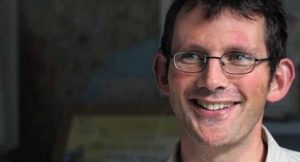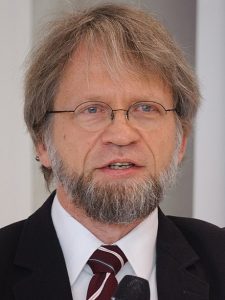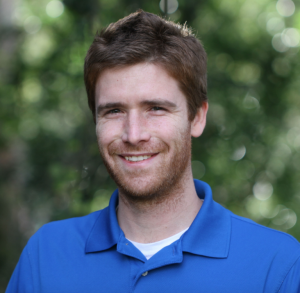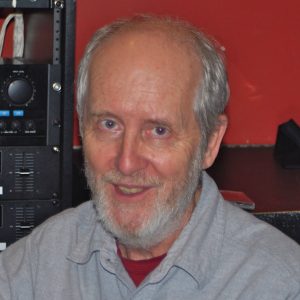The Transition Town movement spread from Totnes England to more than 50 countries. Rob Hopkins co-founded that movement. So why did Rob move on to create an imaginary life? We talk about Rob’s book “What If?” Plus California scientist Patrick Brown: will climate damage slow down our greenhouse gas emissions?
Listen to or download this Radio Ecoshock show in CD Quality (57 MB) or Lo-Fi (14 MB)
THE FUTURE LOOKS BAD… BUT WHAT IF WE CAN MAKE IT BETTER? ROB HOPKINS ON THE POWER OF IMAGINATION
Rob Hopkins used his flow of connections to explore experiments changing our thinking and our lives. He travelled, did interviews, he did a lot of interviews, and these other voices appear for us – voices which you and I would not ordinarily encounter. Rob’s book new book “From What Is to What If – Unleashing the Power of Imagination to Create the Future We Want” – it is almost like an annotated directory of experiments in social change.
Before I could read Rob’s new book I had to write a rant of about three pages long against people who suggest a happy ending to the mess we are in. Given the facts so far, how dare he try to say we can imagine our way out of it? How can he be optimistic without being just a distraction? My imagination is working, but that can be frightening. My mind shows me new “Transition Towns” filled with impoverished refugees in a world way too hot. Maybe people don’t want to imagine a future because it looks so dark?
Or perhaps we can only imagine dark endings because our development in the media landscape was littered with frightening things, thousands of violent deaths portrayed as though lived – as entertainment? Perhaps our imagination grew into expecting dark endings? But then I read Rob’s book, and it’s not like that at all.

Author and social activist Rob Hopkins, UK
Listen to or download this Radio Ecoshock interview with Rob Hopkins in CD Quality of Lo-Fi
According to studies of tens of thousands of people over many decades, most people actually have a decline in creativity. IQ an creativity went up until about 1990, and then creativity started to slide down. Is that because mass media have replaced our imagination with their contrived pretend lives on screens? Is it something else about modern life? Rob investigates all that, including a shrinking in a part of our brain called the Hippocampus. The research was done by Dr. Kyung Hee Kim.
Another startling idea in this Hopkins book: maybe the future doesn’t have to be digging a hole and filling it full of tinned food. It sounds almost heretical, but some of the Big Change could be fun. Rob tells us about Antanas Mockus, elected Mayor in Bogota Columbia. Mayor Mockus fired the corrupt traffic cops and replaced them with mimes holding red and yellow cards, as in soccer games. Then he hired back any traffic police willing to take and pass a course in mime. It worked.

Columbian Mayor Antanas Mockus
Rob travelled along the outer reaches of social experimentation. In the book we meet really inventive, inspiring people that I had never heard of. There are some really great ideas and projects here that could work anywhere. And yet I still found myself wondering, can this help fix things? Do we have time?
I liked this quote in Rob’s book, from Richard Sennett. Richard said: “Modern capitalism works by colonizing people’s imagination of what is possible.” Remember the acronym “TINA” so beloved by politicians in the 1990’s? They actually came right out and said it: “There Is No Alternative”. And they don’t like alternatives, whether it is alternative sexuality, finances or alternative energy.
ONE TINY QUIBBLE
The pages of source notes at the end of your book are an education in themselves. Anyone can check Rob’s statements and profitably surf those links for new ideas and understanding. Out of hundreds of references, I only found one I thought a little dodgy – and that’s not much from such a long list.
In the book Rob writes “Researchers estimate that concentration of 1,000 ppm [CO2] would reduce human cognitive ability by 21 percent. Even the 660 ppm by 2100 set forth in the Paris Agreement on climate change would still result in a 15 percent decline in our cognitive abilities.”
The source is Joseph Allen et al. “Associations of Cognitive Function Scores with Carbon Dioxide, Ventilation, and volatile Organic Compound Exposures in Office Workers: A Controlled Exposure Study of Green and Conventional Office Environments“. [Environmental Health Perspectives 124, no. 1 (2016): 805-12.]
Rob takes a big leap here. To take a single study about carbon dioxide and other toxic materials – in office environments – and then paint that as what will happen to world populations in an open atmosphere is not authoritative. It sounds shocking but I doubt it. But in a later conversation, Rob says he has other sources for that possibility of a link between more carbon dioxide and low cognitive ability.
One more thing: I strongly disagree with the quote from scientist Michael Mann about the Hopkins book. Mann says those reaching despair will go down the same path of denialists – toward inaction. That is not the only option. I know people who believe we are doomed, not to extinction, but to times of great troubles we can barely imagine. But they are still activists, believe to keep on trying is necessary to their personal sense of sanity, and even enough relief from the burden of knowing to experience occasional bursts of bliss in the now.
TECHNOLOGICAL TYRANNY
In the book, Rob explains the ways our fascination with smart phones and online are being used to control us. For example, I did not know that some children’s toys actually that allow kids to record themselves – actually sent recordings back to the toy mega-corporation to be used for marketing… shame on Mattel and the governments that would allow this.
With the help of corporations, we have converted the idea of “play” into “toys”. Has that groomed a generation to become consumers? It seems even as adults we buy our “toys” like tools or vehicles we don’t need, or clothing we will never wear. Does pointless buying take us back to childhood?
Rob says “In 2018, the average ‘total media consumption’ for US adults (and that’s just electronic media: TV, radio , time online, gaming and smart phones) was 11 hours and 6 minutes per day, up from 9 hours 32 minutes per day in 2014.”
But what if the networked human is the only way a world with billions of people can work? What if Rob Hopkins and Alex Smith are just the old people railing against the new? It is fine to recall the brilliance of Einstein and Van Gogh before the Smart Phone, but that doesn’t prove that genius would not have happened if they had phones, or that it won’t happen now that people do. Are we just the parents saying “Put that phone down!”
Creativity might thought of as an organ in our basic system. Some people got the message on fitness. They spend time and money going to a gym to work out. Can we set up imagination gyms? The government of China has implemented a system where they assign a social score to individuals, and take away rights – even public transport privileges – from low scorers. Perhaps we could go the other way and assign rewards to those who demonstrate they are exercising their imaginations? I don’t know how we are going to rekindle our imaginations, but we must.
THE LIVING IMAGINATION LAB
Rob found there are imagination labs and social experiments running all over the world. People with few resources can develop tools or ways of living we all can learn from, and we all must learn quickly. But out of all those groups formed, home-grown experiments, social movements, perhaps a few key paths out of catastrophe might emerge, become viral, and genuinely improve life for billions and the future for all to come. Hopkins asks “What if?” that happened instead of dystopia?
Too many people think they can just write down their brilliant ideas and that’s a book. Rob Hopkins went the old school route of going out to find other people’s brilliant ideas. If you are wondering – what can I do? what can my community do? – this book is full of projects and potential movements. Despite my negativity coming into it, I totally recommend this new Rob Hopkins book.
======================================================================
PATRICK BROWN: WILL CLIMATE DAMAGE SLOW DOWN THE KILLER ECONOMY?
As we face down a climate shifting to a hot new state, some scientists suggest Earth’s systems are not that sensitive. Maybe we won’t get to 3 degrees C warming by the year 2100. Others wonder if the huge economic impact from climate-driven disasters could derail our suicidal urge to burn all the fossil fuels we can find. Or maybe there is a better way out than that?
Those are the kind of questions Patrick Brown takes on – in some of the most prestigious scientific journals. Dr. Patrick T. Brown is Assistant Professor in the department of Meteorology and Climate Science, at San José State University. He studied under the well-known Carnegie scientist Ken Caldeira, and often publishes papers with him. Brown runs the The Weather, Climate and Human Systems Lab at San José U.

Dr. Patrick T. Brown
Listen to or download this Radio Ecoshock interview with Patrick Brown in CD Quality of Lo-Fi
Patrick also has some videos on You tube here.
MAYBE IT WON’T BE AS BAD AS WE THOUGHT?
In 2018, a team led by Peter M. Cox at the University of Exeter published a study saying climate sensitivity is much lower. I think they said we probably won’t get past 3 degree C of heating.
In our interview, Patrick explains their argument, and then the reply he and Ken Caldeira published in the journal Nature, saying the Cox team selected models that showed a lower impact. That reply in Nature is “Greater future global warming inferred from Earth’s recent energy budget” by Brown and Caldeira.
On Radio Ecoshock, I just talked with French scientist Olivier Boucher. His team finds the worst case scenario could be 7 degrees C mean temperature increase over pre-industrial, by the year 2100. You can find more about this important question in Brown’s blog here. Caldeira and Brown concluded “Our results suggest that achieving any given global temperature stabilization target will require steeper greenhouse gas emissions reductions than previously calculated.”
COULD CLIMATE-DRIVEN DAMAGE TO OUR ECONOMY SLOW DOWN THE CARBON-BURNING MACHINE?
Big economic and climate reports just take our present human civilization and model it out into the future. They do not consider a major economic crash for example, or having to abandon parts of major cities like Miami, New York, Venice or Shanghai due to storm surges and rising seas.
A paper led by Dawn Woodward at the University of California calculated that damages from extreme climate change might save humans from the worst levels of heating, or at least counter-balance warming from things like permafrost thaw and albedo changes. That Woodward paper is “Economic carbon cycle feedbacks may offset additional warming from natural feedbacks” published in PNAS January 15, 2019.
Patrick explains his counter-argument in the article “Reduced emissions through climate damage to the economy.”
Can we really know how far and how fast the permafrost will change, or how much Greenland and Antarctic ice will pour into the sea during this century? So far, published predictions have been wrong and too low compared to observations. How confident should we be in arguments that natural changes will not exceed and overwhelm the human drivers coming from fossil fuel burning and land use changes?
We have to be pretty desperate to hope that climate wreckage will stop our apparently suicidal drive to keep burning more and more fossil fuels.
WILL WE REALLY MAKE MONEY OUT OF CLIMATE DAMAGE?
The Wall Street crowd hangs on to the “broken window” fallacy: – climate damage may stimulate the economy rather than hurt it, because we have all those new buildings, even new cities and infrastructure to build. That means more jobs and business. I ask Patrick Brown about this.
How can we estimate what future climate damage to the economy will be? There have been so many surprises, like storms larger or in places or times not seen before. Science has to be based on the past and present. But we are encountering extremes never seen before. So don’t we risk always underestimating how costly the coming decades will be?
Trying to recover from climate damage could also trigger another burst of carbon as we try to rebuild everything, possibly over and over. Can we afford the carbon cost of replacing burned out homes, flooded businesses, and wrecked roads – or does the carbon required to do that become another positive feedback pushing us closer to the edge?
TRYING TO MODEL OUT A CHANGING FUTURE
In tune with the theme of Brown’s lab at San Jose, – “Weather, Climate and Human Systems Lab” – in another paper he raises the difficulty of trying to model a system that is in flux. Earlier science assessed the natural variability of the weather, and then tried to model changes we should expect for a range of forecasts of greenhouse gas emissions. But Brown asks: what if natural variability also changes with the climate?
Didn’t James Hansen point to that change in variability when he showed a “Sigma 5” shift in extremes as the climate warmed? Most of us don’t know what “Sigma 5” means, but we can instantly see it on a chart showing “normal” shifting toward the extremes which then become the new normal. Is that similar to the change of natural variability that you discussed? Surprisingly, Brown says that famous bell curve published by Hansen has since shown to contain an error – found by several other scientists. It is so rare that Hansen makes a mistake!
The problem of how much Earth reacts as it warms is tricky to understand. We know there are various cycles of natural (“unforced”) variability on global mean surface air temperature (GMST). I think of El Nino for example. Natural variability can superimpose variability on our long-term warming, that “can alternatively mask or exaggerate externally forced signals for years to decades at a time.” If that variability ALSO changes along with the climate, we have a shifting situation where just basing warming on pre-industrial times doesn’t accurately help us predict the future.
So Brown et al examine many of the natural causes of variability of global mean surface temperature – which happens to build a platform for the main paper for this interview: namely the background of variability and warming that will make or break our developing global economy, and/or grievously wreck coastal cities for example, with a combination of rising seas and more intense hurricanes/cyclones.
When I try to guess at the future during a climate shift, I recall the troubles my parents’ generation went through. They suffered the great Depression and then World War Two, with at least 100 million lives lost, cities bombed flat, and genocide. They got through it, some say stronger, but that is the kind of times I fear my grandson will have to navigate.
Thank you for listening to Radio Ecoshock – and reading this long blog! I put tons of work into all this. I have no staff, no other job, and everyone gets this program for free, including radio stations. To save your brain, I don’t run commercials in the show or on this web site. That means I depend on you the listener/reader to keep me going and pay the bills for the show and Ecoshock server (we get a lot of downloads!). Please donate some money to help me keep going. A donation is fast and easy here – or sign up to become a monthly donor.

Alex Smith
Pingback: Talking imagination, despair and hope on Radio Ecoshock – Rob Hopkins
yes~! you introduced Garrett Relation to dsiscussion wiht Brown. He didn’t seem to know of it;and didn’t answer your question. He went on about how efficiency has improved (calories per acre etc) but what about Jeavons Revenge ( the paradox that the more we save the more we spend what we save). Brown isn’t persuasive about earth senisitsivity either, Carana and Wadhams and Waskow all have rationales around 10dC for doubling co2